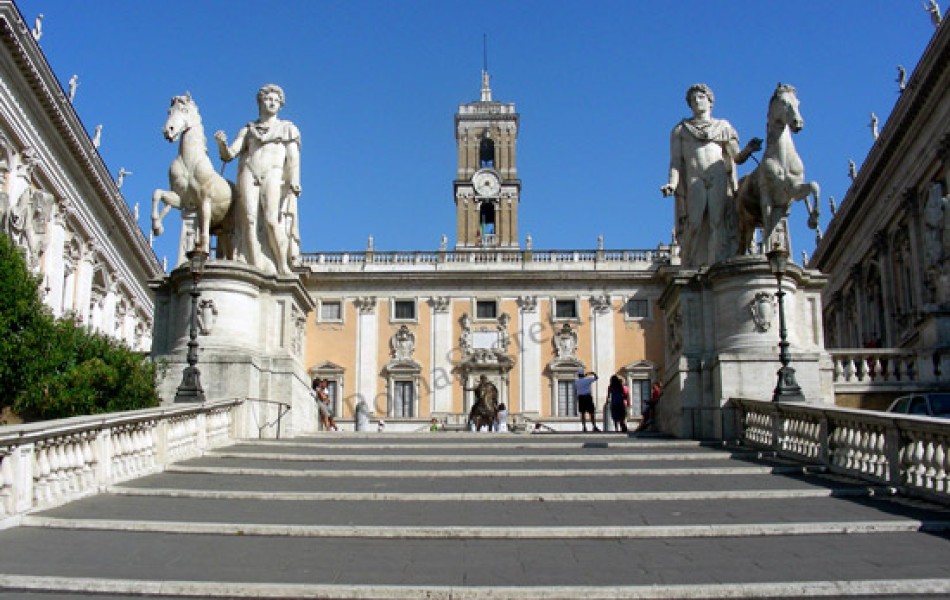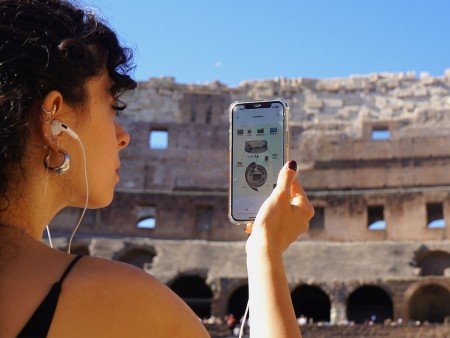Capitoline Hill Staircase: The Elegance of Renaissance Architecture
The Cordonata’s wide, shallow steps ensure easy access for both pedestrians and riders, embodying the Renaissance fusion of elegance and function

26 March 2025
Rome Travel GuideMichelangelo and the Vision for the Capitoline Hill
The Capitoline Staircase, or Cordonata, was designed by Michelangelo Buonarroti in the mid-16th century as part of his grand redesign of Piazza del Campidoglio, commissioned by Pope Paul III Farnese. The Capitoline Hill, one of Rome’s seven hills, held deep historical and political significance, being the heart of ancient Roman power. By the Renaissance, however, the area was in disrepair, and Michelangelo was tasked with restoring its dignity. His vision combined ancient Roman grandeur with Renaissance ideals of symmetry, perspective, and accessibility, transforming the site into an enduring symbol of civic pride and artistic excellence. You can explore it firsthand, along with the square and other historic sites, on our Private Rome Tour by Night.
The Unique Design of the Cordonata
One of the most distinctive features of Michelangelo’s project is the Cordonata, the grand, sloping staircase leading up to the piazza. Unlike traditional staircases with steep steps, the Cordonata features wide, shallow steps, making it accessible to people on foot and horseback. This design choice reflects a typical Renaissance approach: blending functionality with elegance. The staircase is flanked by an elegant balustrade, drawing the eye upward and guiding visitors toward the monumental Palazzo Senatorio, which dominates the hilltop. The soft incline and rhythmic pattern of the steps create a sense of ceremony and anticipation, typical of Renaissance urban planning, which sought to engage the viewer’s senses and emotions.
Details to Discover: Symbols and Statues
A closer look at the Cordonata reveals fascinating details rich with symbolic meaning. At its base stand the statues of two Egyptian-style lions, ancient symbols of power and protection. As visitors ascend, they are greeted at the top by the colossal statues of Castor and Pollux, the mythical twins who symbolize Rome’s legendary origins and guardianship. Between them stands the statue of Marcus Aurelius, the only surviving bronze equestrian statue from ancient Rome, placed at the center of the piazza by Michelangelo himself. Although the current statue is a replica (the original is in the Capitoline Museums), it remains a central feature of Michelangelo’s carefully composed architectural "stage." These details embody the Renaissance ideal of reviving and reinterpreting ancient symbols to give them new civic significance.
A Masterpiece of Renaissance Style and Philosophy
The Capitoline Staircase is a perfect example of Renaissance urban design. Michelangelo employed the principles of symmetry, order, and perspective to create a sense of harmony and grandeur. The wide staircase, combined with the star-shaped paving pattern of the piazza, draws visitors naturally toward the center, creating a theatrical experience that unfolds step by step. The use of classical motifs, such as columns and statues, reflects the Renaissance fascination with ancient Roman art and architecture. Additionally, Michelangelo’s emphasis on accessibility—designing the Cordonata to be climbed on horseback—highlights Renaissance ideals of humanism and inclusivity, where public spaces were meant to be enjoyed by all citizens.
The Legacy of Michelangelo’s Cordonata Today
Today, the Capitoline Staircase stands not only as a practical passage to the piazza but as a symbol of Rome’s layered history—from ancient to medieval, from Renaissance to modern. Visitors who take the time to ascend slowly can appreciate the artistry of each element, from the texture of the travertine steps to the interplay of light and shadow on the balustrade. The staircase invites reflection on Rome’s past while celebrating the Renaissance vision of civic space as a place for public gathering and pride. Michelangelo’s Cordonata is more than a functional structure; it is an invitation to experience the Eternal City’s history through the eyes of one of its greatest artists.
Unlock more of Rome’s beauty with our Trevi Fountain travel guide - perfect to read before your visit.
Our categories:
You may also be interested ...

Colosseum Guided Audio Tour with Roman Forum and Palatine Hill
Private tour
Discover Ancient Rome’s secrets and history with our immersive Colosseum guided audio tour, rich in image and content
starting from: € 51 € 42

Domus Aurea Tour with VR Experience: the Architectural Marvel of Imperial Rome
Small group tours
(19)
Step into the vast frescoed halls of Nero’s Domus Aurea, both east and west wings. Enjoy the immersive 3D reconstruction
starting from: € 85 € 61